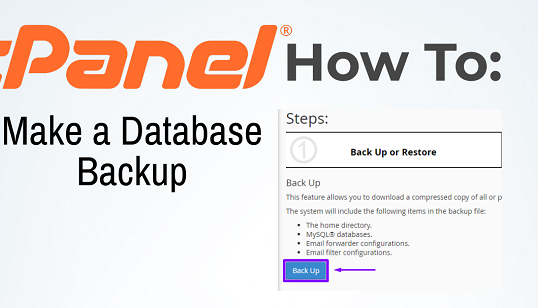
Table of Contents
The best hosting for a JavaScript application depends on the type of application (e.g., static site, server-side rendered, single-page application) and your specific needs (e.g., scalability, cost, deployment speed). Here’s a breakdown of popular hosting options:

1. Static JavaScript Applications
- For frontend frameworks like React, Angular, Vue, or static content (HTML, CSS, JS):
Best Options:
- Vercel: Great for serverless deployments, seamless Git integration, fast builds, and global CDN.
- Netlify: Excellent for static sites with features like serverless functions and form handling.
- AWS Amplify: Powerful, scalable hosting with CI/CD integration for modern web apps.
- GitHub Pages: Ideal for simple static sites and personal projects; free for public repositories.
- Cloudflare Pages: Focuses on speed with edge hosting and built-in caching.
2. Server-Side Rendered (SSR) Applications
- For applications using frameworks like Next.js or Nuxt.js that require SSR.
Best Options:
- Vercel: Built for Next.js; easy to deploy SSR apps with optimized serverless architecture.
- Render: General-purpose hosting; supports SSR apps with good pricing and customizability.
- AWS (EC2, Lambda): Scalable but requires more setup.
- Heroku: Simple setup for Node.js/Express.js apps with SSR support.
3. Full-Stack JavaScript Applications
- For applications with a backend (e.g., Node.js, Express, Nest.js) and a frontend.
Best Options:
- Heroku: Easy-to-use platform for full-stack apps with built-in scaling options.
- DigitalOcean App Platform: Affordable and developer-friendly; great for full-stack setups.
- AWS (Elastic Beanstalk, EC2): Highly scalable but complex to configure.
- Render: Supports both frontend and backend hosting; simple configuration.
- Fly.io: Offers edge deployments for full-stack applications.
- Google Cloud Run: Cost-effective serverless option for full-stack apps.
4. Real-Time or High-Performance Apps
- For apps requiring real-time updates (e.g., chat apps, collaborative tools).
Best Options:
- Firebase Hosting + Cloud Functions: Perfect for real-time apps with Firestore.
- Supabase: Combines hosting with real-time database features.
- Socket.io with AWS/Linode/Vercel: For custom real-time implementations.
Factors to Consider
- Performance: Look for providers with CDN and edge caching.
- Ease of Use: Platforms like Vercel and Netlify offer intuitive workflows.
- Scalability: AWS, Google Cloud, and Azure are the leaders in scaling, but require setup knowledge.
- Cost: Free tiers are offered by Vercel, Netlify, Heroku, and Firebase; scalable solutions may cost more.
- Serverless vs. Managed: Serverless (e.g., Vercel, AWS Lambda) is great for modern apps, while managed hosting (e.g., DigitalOcean) suits custom setups.
Applications of Javascript

JavaScript is considered one of the best programming languages for modern development due to its versatility, wide adoption, and robust ecosystem. Here’s why JavaScript stands out:
1. Full-Stack Capabilities
- Frontend Development: JavaScript is the backbone of web development, powering interactive user interfaces in browsers. Frameworks like React, Angular, and Vue.js make building dynamic web apps seamless.
- Backend Development: With Node.js, JavaScript enables developers to write server-side code, allowing full-stack development using a single language.
2. Wide Adoption and Community Support
- JavaScript is one of the most widely used programming languages globally, making it easy to find learning resources, libraries, and community support.
- Developers have access to a massive ecosystem of tools, packages, and frameworks through npm (Node Package Manager), the largest software registry.
3. Versatility
- Cross-Platform Development: JavaScript can power web, mobile (React Native, Ionic), desktop (Electron), and even IoT applications.
- Run Anywhere: It runs directly in browsers and on servers, making it highly accessible.
- Dynamic Nature: JavaScript’s dynamic typing and flexible syntax adapt to various programming styles.
4. Strong Ecosystem of Frameworks and Libraries
- Frameworks like React, Angular, and Vue.js make UI development efficient and powerful.
- Libraries like D3.js for data visualization and Three.js for 3D graphics open up creative possibilities.
- Full-stack frameworks like Next.js (React) and Nuxt.js (Vue) simplify server-side rendering and static site generation.
5. Rich Browser API Access
- JavaScript directly interacts with browser APIs to enable:
- DOM manipulation for dynamic content updates.
- Handling events like clicks, scrolls, or form submissions.
- Fetching and interacting with data via AJAX or Fetch API.
6. Asynchronous and Real-Time Capabilities
- JavaScript supports asynchronous programming with features like Promises and async/await.
- Frameworks like Socket.io make it easy to build real-time apps like chat applications and live dashboards.
7. High Performance with Modern Enhancements
- The introduction of ECMAScript standards (ES6+) has significantly improved JavaScript’s syntax and features, making it more developer-friendly.
- Modern engines like Google V8 (used in Chrome and Node.js) make JavaScript extremely fast and efficient.
8. Universal Accessibility
- Browsers universally support JavaScript, making it indispensable for web development.
- Users don’t need to install additional plugins or software to run JavaScript-based web apps.
9. Career Opportunities
- JavaScript skills are highly in demand, and mastering it opens opportunities across web, mobile, and backend development.
10. Continuous Evolution
- JavaScript continuously evolves with annual updates to the ECMAScript standard, introducing new features and capabilities.
- Integration with modern tools like TypeScript and build systems (Webpack, Vite) further enhances its power and usability.
Hosting types suitable for Javascript application

The best type of hosting for your application depends on your specific needs, such as the type of application, expected traffic, scalability requirements, and budget. Here’s a breakdown of hosting types and their best use cases to help you decide:
1. Shared Hosting
- What it is: Multiple websites are hosted on a single server, sharing its resources.
- Best for: Small websites, blogs, and basic portfolios.
- Pros:
- Affordable and beginner-friendly.
- Easy to set up with minimal technical knowledge.
- Cons:
- Limited performance and scalability.
- Not suitable for resource-intensive applications.
- Popular Providers: Bluehost, HostGator, SiteGround.
2. Virtual Private Server (VPS) Hosting
- What it is: A virtualized environment where resources are isolated for each user.
- Best for: Medium-sized websites, e-commerce platforms, and growing applications.
- Pros:
- Better performance and control than shared hosting.
- Scalable with predictable costs.
- Cons:
- Requires some technical knowledge for server management.
- Popular Providers: DigitalOcean, Linode, Vultr.
3. Dedicated Server Hosting
- What it is: A physical server dedicated to a single customer.
- Best for: Large-scale applications, enterprises, and websites requiring maximum control.
- Pros:
- Complete control over the server.
- High performance and reliability.
- Cons:
- Expensive and requires technical expertise.
- Popular Providers: OVHcloud, Liquid Web.
4. Cloud Hosting
- What it is: Hosting on a network of virtual servers instead of a single physical server.
- Best for: Applications with variable or high traffic and scalability needs.
- Pros:
- Highly scalable and flexible.
- Pay-as-you-go pricing.
- Reliable with minimal downtime.
- Cons:
- Can get expensive with heavy traffic.
- Popular Providers: AWS, Google Cloud, Microsoft Azure.
5. Managed Hosting
- What it is: Hosting where the provider handles server management, updates, and security.
- Best for: Developers who want to focus on development rather than infrastructure.
- Pros:
- Hassle-free with support for complex setups.
- Ideal for non-technical users.
- Cons:
- More expensive than unmanaged options.
- Popular Providers: Kinsta, WP Engine (WordPress-focused), Flywheel.
6. Serverless Hosting
- What it is: Hosting where you focus on deploying code, and the provider manages scaling and infrastructure.
- Best for: Modern web apps, microservices, and APIs.
- Pros:
- Automatic scaling.
- Pay only for resources used.
- Ideal for unpredictable traffic.
- Cons:
- May require architectural changes for compatibility.
- Popular Providers: Vercel, Netlify, AWS Lambda.
7. Static Hosting
- What it is: Hosting designed for static files like HTML, CSS, and JavaScript.
- Best for: Static sites, single-page apps, and JAMstack applications.
- Pros:
- Lightning-fast performance.
- Usually free or very cheap.
- Built-in CDN and security.
- Cons:
- Limited to static or client-rendered content.
- Popular Providers: Vercel, Netlify, GitHub Pages.





